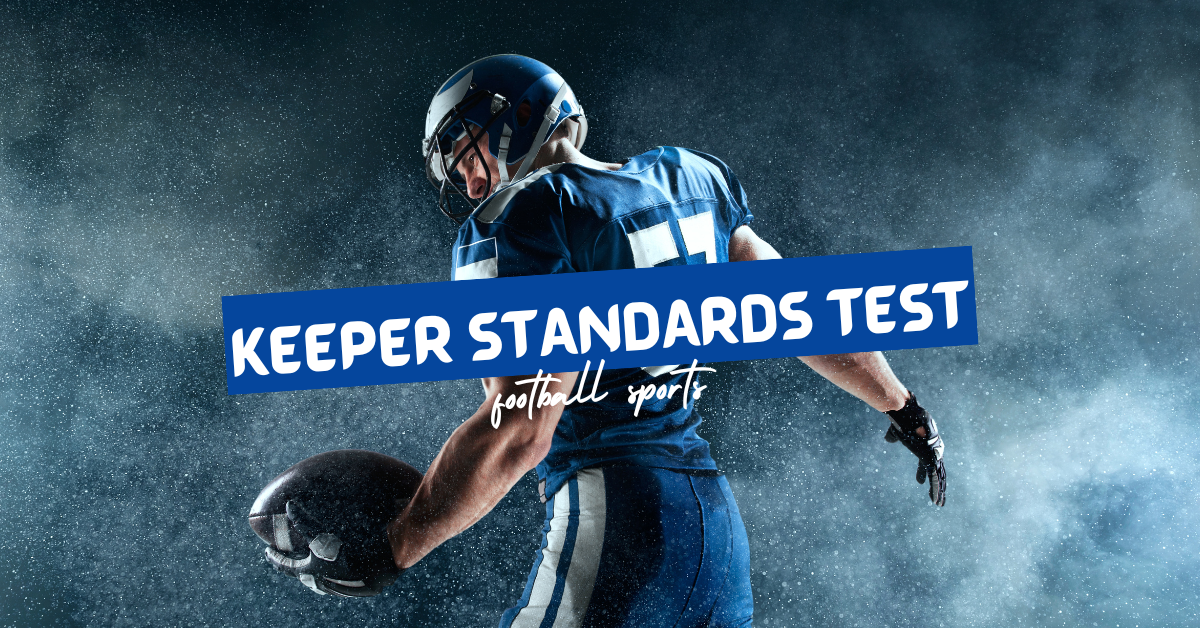Sports
Kaufmann TT Ranking: An In-Depth Analysis of Table Tennis Rankings

The Kaufmann TT ranking is a specialized rating system that assesses the performance of table tennis players based on their skills, match outcomes, and other influential factors. Designed to be fair and reflective of true player abilities, it aims to provide an accurate ranking within both national and international table tennis communities.
Origins of the Kaufmann TT Ranking System
The Kauf mann TT ranking system was developed to address some of the limitations found in traditional ranking methods. It emerged as a response to the need for a ranking system that provides a more holistic view of player performance, considering various factors beyond simple match wins and losses.
How the Kaufmann TT Ranking Differs from Other Systems
Unlike traditional ranking systems that may prioritize tournament wins or overall points, Kauf mann TT ranking considers a variety of factors, such as opponent skill level and match significance. This approach ensures a more balanced assessment of a player’s true capabilities, as it doesn’t solely reward high win percentages.
Importance of the Kaufmann Ranking in Table Tennis
Kauf mann TT ranking has become vital for players aiming to improve their international standing. The ranking offers a competitive edge by helping players and coaches develop strategic training plans based on strengths and weaknesses highlighted by the system, giving a comprehensive view of player progression.
Factors Affecting the Kaufmann TT Ranking
Several factors influence Kauf mann TT rankings, including:
Match Outcomes: Winning or losing affects the rank, but the impact varies based on the opponent’s rank.
Opponent’s Skill Level: Higher-ranked players offer more ranking points for a win, making challenging matches beneficial.
Performance Consistency: Regular performance at a high level results in steadier rank progression.
These factors make the Kauf mann TT ranking a dynamic and performance-driven system.
Advantages of the Kaufmann TT Ranking System
One of the most significant benefits of the Kaufmann TT system is its emphasis on fairness. By taking multiple aspects of a match into account, it minimizes the effects of occasional bad performances and gives players a chance to rise in rankings through consistent effort.
Limitations and Criticisms of Kaufmann TT Ranking
While Kauf mann TT ranking is praised for its balanced approach, it also faces some criticisms:
Complexity: The system’s intricacy can make it hard for some players and fans to understand.
Time-Consuming Calculations: Coaches and officials may need considerable time and resources to calculate and maintain rankings accurately.
These aspects, while challenging, don’t outweigh the system’s strengths but highlight areas for improvement.
Methodology Behind Kaufmann TT Rankings
The Kaufmann TT system applies a formula that weights multiple factors, including match importance, opponent rating, and win/loss consistency. This methodology makes it a dynamic system that rewards improvement and consistency, reflecting both short-term performance and long-term skill.
Kauf mann TT Ranking Calculation Explained
The ranking calculation in the Kaufmann TT system involves evaluating a player’s recent match history and calculating the impact based on the opponent’s rating. Each win and loss is adjusted based on the difference between the player’s ranking and the opponent’s, making each match a unique calculation rather than a one-size-fits-all approach.
Impact on Players and Competitions
Kauf mann TT ranking has significantly impacted players by encouraging more strategic play. Players now have added motivation to compete against higher-ranked opponents, as winning these matches leads to greater ranking benefits. For tournaments, the ranking system allows for more balanced match setups, as it helps classify players more accurately based on skill and performance.
Why Players Trust Kaufmann TT Ranking
The system’s transparency and fairness have won the trust of players worldwide. By providing rankings that feel reflective of their hard work and skill levels, Kaufmann TT has become a standard many players strive to climb, as it validates their competitive edge and abilities.
How Kaufmann TT Ranking Benefits Fans and Sponsors
Fans benefit from the Kauf mann TT ranking as it provides a more realistic view of a player’s standing, making matches more engaging and predictable. Sponsors are more likely to support top-ranked players, as the system’s credibility and popularity give added exposure and a positive return on investment.
Comparing Kaufmann TT Ranking to Elo and ITTF Rankings
The Kau fmann TT ranking system shares similarities with the Elo ranking system, often used in chess, in its adaptability and use of opponent rating for evaluation. However, while Elo adjusts based solely on wins and losses, Kaufmann TT considers performance consistency, match significance, and other unique factors, making it more comprehensive.
On the other hand, the ITTF (International Table Tennis Federation) ranking system relies heavily on tournament results and participation frequency, which can sometimes overlook a player’s consistent improvement and quality of opponents. Kaufmann TT provides a more balanced view, particularly for players who may not participate in as many international events.
Future of Kaufmann TT Ranking
The future of Kauf mann TT ranking looks promising as more leagues and organizations recognize its benefits. With continuous adjustments to improve its accuracy and adaptability, the Kaufmann TT ranking system may soon become the preferred method for evaluating table tennis players at various levels.
Conclusion
Kaufmann TT ranking has revolutionized the way table tennis performance is evaluated, providing a fair and balanced ranking system that reflects player abilities more accurately than many traditional methods. By considering factors beyond simple match outcomes, it supports player development and enhances competition. For players, coaches, fans, and sponsors alike, the Kauf mann TT ranking offers a reliable and insightful way to gauge talent and growth within the sport.
FAQs
What is the Kaufmann TT ranking used for?
The Kaufmann TT ranking system is used to evaluate table tennis players based on various factors, such as match outcomes and opponent skill level, offering a comprehensive performance assessment.
How does Kaufmann TT ranking differ from traditional systems?
Unlike traditional rankings, Kaufmann TT incorporates match significance and opponent ratings, offering a holistic view of a player’s performance.
Is the Kaufmann TT ranking widely accepted?
Yes, it is gaining popularity for its fair evaluation methods and is increasingly used in national and international table tennis circles.
Can Kaufmann TT rankings be used for other sports?
While it is designed for table tennis, similar principles could be adapted for other individual sports.
What factors affect a player’s Kaufmann TT ranking?
Key factors include match outcomes, opponent ratings, and performance consistency, providing a detailed picture of a player’s skills and progress.
Sports
Sportsurge: The Ultimate Destination for Sports Enthusiasts

In a world where sports bring millions of fans together, finding a reliable platform to watch your favorite games live can be a challenge. Sportsurge has emerged as a game-changer, offering sports lovers a seamless way to access live streams of their favorite matches. This article delves into everything you need to know about Sport surge, its features, benefits, and why it’s a favorite among fans.
What is Sportsurge?
Sport surge is an online streaming platform that provides links to live sports events. It caters to various sports, including football, basketball, MMA, boxing, and more. Unlike traditional streaming services, Sport surge focuses on providing high-quality, free streaming options through verified links.
Why Sportsurge is Popular Among Fans
Free Access to Live Sports
One of the primary reasons Sport surge has gained immense popularity is its cost-free access to live sports. You don’t need to subscribe or pay to enjoy your favorite games.
Wide Range of Sports Coverage
Sport surge covers a variety of sports, ensuring there’s something for every fan. From the NBA to the UFC, the platform caters to diverse interests.
User-Friendly Interface
Navigating Sport surge is a breeze, thanks to its intuitive and clutter-free interface. Even first-time users can easily find and stream their desired matches.
Key Features of Sportsurge
High-Quality Streaming Links
Sport surge provides users with high-quality streaming links, ensuring a smooth viewing experience without interruptions.
Real-Time Updates
The platform constantly updates its links, ensuring users have access to the latest live streams.
No Signup Required
Unlike many streaming platforms, Sport surge doesn’t require users to create an account or provide personal information.
How to Use Sportsurge
Step 1: Visit the Website
Simply visit the Sport surge website from your browser.
Step 2: Select Your Sport
Choose your preferred sport from the list available on the homepage.
Step 3: Pick a Stream
Browse through the links provided and select one with the highest quality.
Step 4: Enjoy the Game
Sit back, relax, and enjoy watching your favorite team in action.
Sports Covered by Sportsurge
Football
From the English Premier League to the NFL, Sport surge offers extensive football coverage for fans worldwide.
Basketball
NBA enthusiasts can rely on Sport surge for live streaming of all the action-packed games.
Mixed Martial Arts (MMA)
Whether it’s the UFC or Bellator, Sportsurge ensures MMA fans never miss a fight.
Boxing
Boxing events, including championship bouts, are also available on the platform.
Tennis
Major tennis tournaments like Wimbledon and the US Open are accessible via Sport surge.
Benefits of Using Sportsurge
Cost-Effective
Since it’s free, Sport surge is a fantastic option for fans who don’t want to spend on subscriptions.
Convenience
Sport surge eliminates the hassle of hunting for reliable streams, offering verified links in one place.
No Geographic Restrictions
Sport surge allows fans from across the globe to access live streams without restrictions.
Is Sportsurge Legal and Safe?
Legal Considerations
Sport surge acts as an aggregator and doesn’t host content directly. However, users should check the legality of using such services in their region.
Safety Measures
While Sport surge is generally safe, using a VPN and reliable antivirus software is recommended to enhance security.
Alternatives to Sportsurge
While Sport surge is an excellent platform, alternatives like Stream2Watch, Buffstreams, and CrackStreams also provide similar services for sports enthusiasts.
Challenges Faced by Sportsurge Users
Pop-Up Ads
Although the platform is free, users may encounter pop-up ads, which can be a minor inconvenience.
Link Reliability
Some links may occasionally fail to work, though Sport surge updates them frequently.
Tips for an Optimal Experience
Use a VPN
A VPN enhances privacy and bypasses geo-restrictions for uninterrupted streaming.
Check Link Quality
Always select links with high-quality ratings to ensure the best viewing experience.
Conclusion
Sportsurge has revolutionized the way sports fans watch live games online. Its wide range of sports, cost-free access, and user-friendly design make it a standout platform for sports lovers. Whether you’re a football fanatic or a basketball enthusiast, Sport surge ensures you never miss a moment of the action.
FAQs
Is Sportsurge completely free to use?
Yes, Sportsurge is entirely free, with no hidden charges or subscription fees.
Do I need to create an account to use Sportsurge?
No, Sport surge does not require any signup or personal details to access streams.
Can I watch international sports on Sportsurge?
Absolutely! Sport surge provides links to international sports events across the globe.
Is it legal to use Sportsurge in my country?
The legality depends on your region’s streaming laws. It’s advisable to check local regulations before using the platform.
Does Sportsurge work on mobile devices?
Yes, Sport surge is compatible with both mobile devices and desktops, ensuring flexibility for users.



















